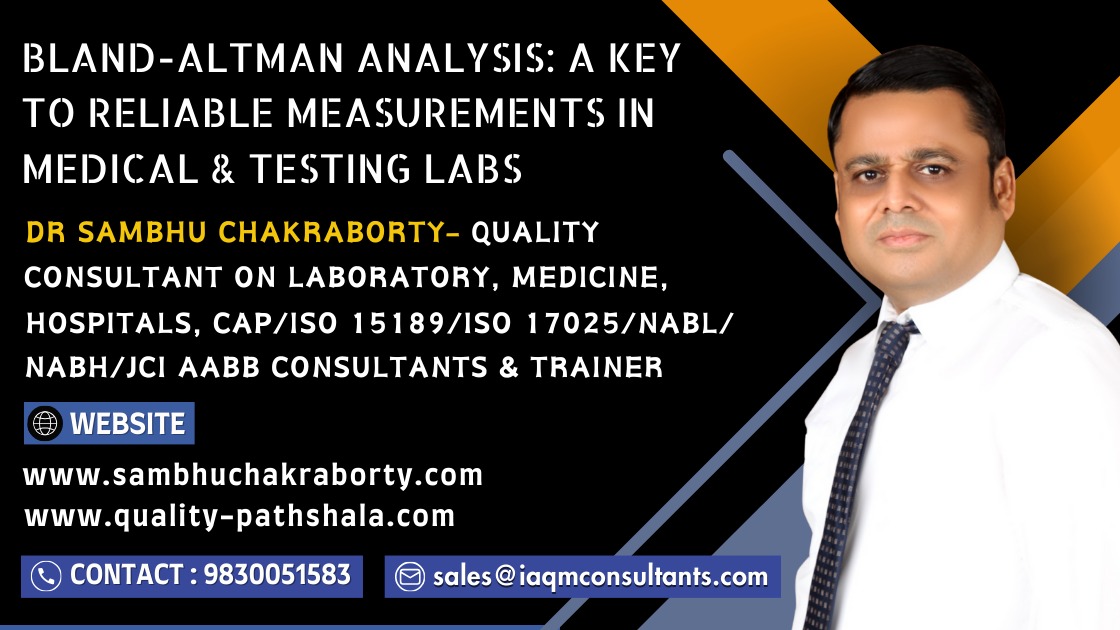Bland-Altman Principle for Medical Testing Laboratories
In the realm of medical testing laboratories, the accuracy and reliability of test results are paramount. This is where the Bland-Altman principle comes into play, offering a robust method for assessing the agreement between two different measurement techniques. Understanding and applying this principle is critical for ensuring reliable patient diagnostics and advancing medical research.
What is the Bland-Altman Principle?
Developed by J. Martin Bland and Douglas G. Altman in 1986, the Bland-Altman principle is a statistical method used to compare two measurement techniques. In medical laboratories, different instruments or methods can yield varying results for the same sample. The Bland-Altman analysis provides a visual and quantitative way to assess if these differences are acceptable or if they indicate a significant discrepancy.
The Methodology
The core of the Bland-Altman method is relatively straightforward. It involves plotting the difference between the measurements of the two methods against their average. This plot, often called a Bland-Altman plot, serves several purposes:
- Identifying Bias: The mean difference (or bias) between the methods is calculated. A zero mean difference suggests perfect agreement, but often some level of bias is present.
- Analyzing Limits of Agreement: This includes calculating the upper and lower limits within which most differences between the two methods will lie. These limits, usually set at mean difference ± 1.96 standard deviations, provide a range that can be considered acceptable.
- Spotting Trends or Systematic Errors: The plot allows for the visual inspection of patterns. For instance, if the differences increase as the magnitude of the measurement increases, this suggests a proportional bias.
Applications in Medical Testing Laboratories
In medical laboratories, the Bland-Altman principle is utilized in several ways:
- Comparing New Methods with Established Ones: When a new testing method or instrument is introduced, the Bland-Altman analysis is crucial to ensure that it agrees sufficiently with the current standard.
- Quality Control: Regular Bland-Altman analyses can be part of a laboratory’s quality control processes, ensuring that different instruments or batches of reagents are producing consistent results.
- Clinical Decision Making: For clinicians, understanding the limits of agreement between different tests is vital, especially when these tests are used interchangeably.
Advantages and Limitations
The major advantage of the Bland-Altman method is its simplicity and clarity. It provides a straightforward, visual means of assessing agreement and identifying potential problems.
However, there are limitations:
- Subject to Sample Size: The reliability of the limits of agreement depends on the sample size; larger samples provide more confidence.
- Assumption of Normality: The method assumes that differences between methods are normally distributed, which might not always be the case.
- Limited to Two Methods: The standard Bland-Altman analysis is designed for comparing two methods. Comparing more than two methods requires more complex statistical techniques.
Calculating the bias of test results is an essential step in assessing the accuracy of a measurement system, especially when comparing results from different machines or instruments. Bias represents the systematic error or deviation of the measured values from a known or true reference value. Here’s how you can calculate bias:
1. Collect Data:
- Gather a set of samples or measurements that you want to assess for bias. Ideally, these samples should have known or reference values to which you can compare the measurements obtained from the machines.
2. Determine the Reference Value:
- If your samples have known reference values (e.g., a certified standard), use these values as your reference. If not, you may need to establish a reference value through an appropriate method or standard.
3. Calculate the Bias for Each Measurement:
- For each measurement or sample, calculate the bias using the following formula:
Bias (or Measurement Error) = Measured Value – Reference Value
4. Calculate the Mean Bias:
- Calculate the mean (average) of all the bias values obtained in step 3. This represents the overall bias of the measurement system.
5. Analyze the Results:
- A bias of zero indicates that the measurements are unbiased, i.e., they match the reference values perfectly. Positive bias indicates that measurements are consistently higher than the reference values, while negative bias indicates measurements are consistently lower.
6. Assess Significance:
- Determine whether the calculated bias is significant or within acceptable limits. This assessment depends on your specific application and industry standards.
7. Report the Bias:
- Report the calculated bias, along with any relevant statistical information, in your measurement or test results.
It’s important to note that bias assessment should be conducted as part of a broader evaluation of measurement system performance, which may include other factors like precision, linearity, and repeatability.
Additionally, some industries and standards organizations may provide specific guidelines and criteria for bias assessment, so it’s essential to refer to relevant standards or regulations applicable to your field when calculating and interpreting bias.

Conclusion
The Bland-Altman principle remains a fundamental tool in medical testing laboratories for assessing the agreement between different measurement methods. Its simplicity, combined with the valuable insights it provides, makes it an essential component of laboratory quality control and method validation. As medical science advances and new testing methods emerge, the Bland-Altman analysis will continue to play a crucial role in ensuring the reliability and accuracy of laboratory measurements.
About the Author
Dr. Sambhu Chakraborty is a distinguished consultant in quality accreditation for laboratories and hospitals. With a leadership portfolio that includes directorial roles in two laboratory organizations and a consulting firm, as well as chairman of IOL ( An ILAC stakeholder organisation), Dr. Chakraborty is a respected voice in the field. For further engagement or inquiries, Dr. Chakraborty can be contacted through email at director@iaqmconsultants.com and info@sambhuchakraborty.com. Additional resources and contact information are available on his websites,https://www.quality-pathshala.com and https://www.sambhuchakraborty.com, or via WhatsApp at +919830051583
